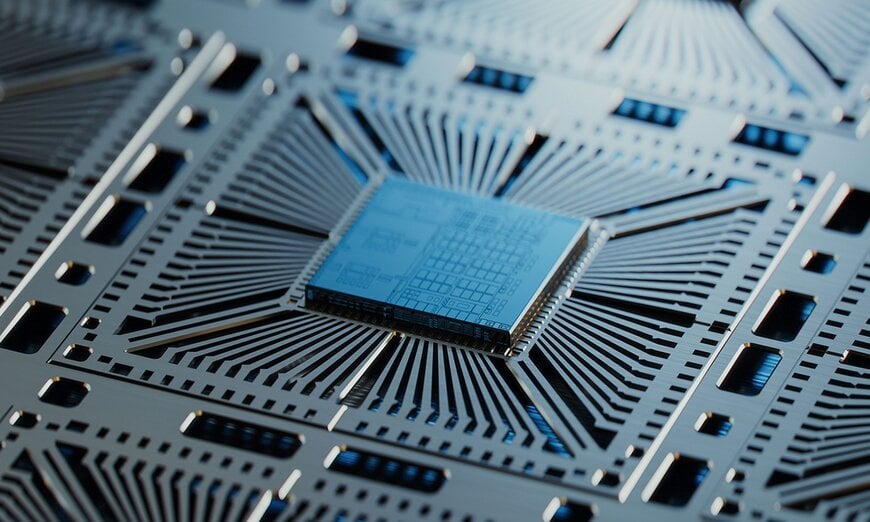electronics-journal.com
24
'25
Written on Modified on
Siemens turbocharges semiconductor and PCB design with generative, agentic AI
Siemens integrates generative and agentic AI across its EDA portfolio, enhancing productivity and accelerating chip/PCB design and verification through NVIDIA microservices.
www.sw.siemens.com

At the 2025 Design Automation Conference, Siemens Digital Industries Software today unveiled its AI-enhanced toolset for the EDA design flow. Throughout the event, Siemens is showcasing how artificial intelligence (AI) can improve productivity, accelerate time to market for the EDA industry and enable customers to explore innovation opportunities at the rapidly increasing pace that the market demands.
Siemens is demonstrating a new EDA AI system specifically designed for semiconductor and PCB design environments. The purpose-built EDA AI system delivers secure, advanced generative and agentic AI capabilities, offering unparalleled customization capabilities and seamless integration across the entire EDA workflow.
Delivering openness, security and customizability across the entire EDA workflow
Using the new EDA AI System, customers can integrate their own EDA data and create custom workflows using advanced AI, enabling teams to deploy AI where it adds the most value - enhancing adoption and competitiveness without disrupting workflows. With enterprise-grade security, customizable access control and flexible deployment options (on-premises or cloud), Siemens delivers data protection completely within customers’ secure data centers. Additionally, it provides a strong data flywheel effect using a centralized multimodal data lake that boosts productivity through each interaction while supporting various AI models, including large and small language models, and machine and reinforcement learning.
Leveraging NVIDIA AI technologies to further accelerate EDA workflows
In addition to in-house infrastructure and third-party models, Siemens’ EDA AI system also supports NVIDIA NIM microservices and NVIDIA Llama Nemotron models. NVIDIA NIM enables the scalable deployment of inference-ready models across cloud and on-premises environments, supporting real-time tool orchestration and multi-agent systems. Llama Nemotron adds high context reasoning and robust tool-calling for more intelligent automation across the EDA workflow.
“AI agents can dramatically boost productivity for complex electronic design automation to support engineers across layout optimization, simulation and verification, freeing engineers to focus on creative problem-solving and advanced design challenges,” said Tim Costa, senior director of CAE and CUDA-X at NVIDIA. “With NVIDIA NIM microservices and Llama Nemotron reasoning models, Siemens EDA can speed the development of tomorrow’s most intricate electronic systems.”
Enabling AI capabilities across the Siemens EDA portfolio
Aprisa™ AI software:
Aprisa AI is a fully integrated technology in the Aprisa digital implementation solution, enabling next-generation AI features and methodologies across RTL-to-GDS. Its capabilities include AI design exploration that adaptively optimizes for power / performance / area (PPA) for a given design, as well as integrated generative AI-assist, delivering ready-to-run examples and solutions.
With a natural language interface built-in together with production-ready, fully customizable and transportable AI-generated solutions, Aprisa AI delivers 10x productivity, 3x faster time to tapeout and 10 percent better PPA for digital designs across all process technologies, enabling massive engineering team and compute scalability, while accelerating time-to-market for the next generation of silicon designs.
Calibre® Vision AI software:
Calibre Vision AI offers a revolutionary advance in chip integration signoff by helping design teams identify and fix critical design violations in half the time of existing methods by instantly loading and organizing them into intelligent clusters. Designers can then prioritize their activity based on this clustering and achieve a higher level of productivity. Calibre Vision AI also improves efficiency in the workflow with the addition of “bookmarks” that allow designers to capture current analysis state, including notes and assignments, and then foster enhanced collaboration between chip integrators and block owners during physical verification. Calibre Vision AI is integrated into existing layout viewers and physical design tools to enable engineers to debug in their current implantation environment. To learn more about Calibre Vision AI, visit: https://eda.sw.siemens.com/en-US/ic/calibre-design/interfaces/vision-ai/
Solido™ generative and agentic AI:
Solido now harnesses Siemens’ EDA AI system to deliver advanced generative and agentic AI capabilities throughout the Solido Custom IC platform to transform next generation design and verification. Tailored to each phase of the custom IC development process, including schematic capture, simulation, variation-aware design and verification, library characterization, layout and IP validation, Solido’s new generative and agentic AI empowers engineering teams to achieve orders-of-magnitude productivity gains.
www.siemens.com

